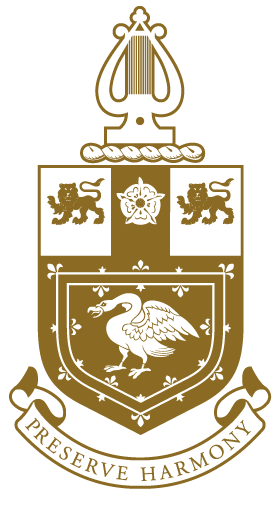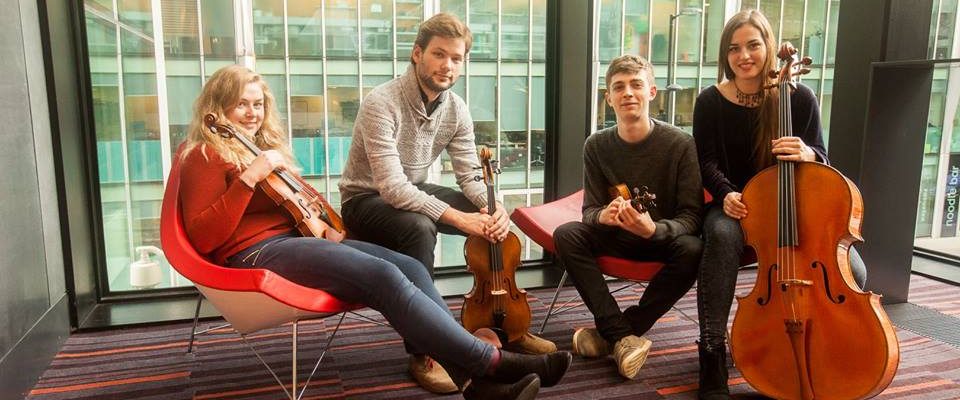Young Artist Interview: Sami Tammilehto
London-based percussionist Sami Tammilehto is a former student of Tampere Music Academy and the Royal Academy of Music. A regular orchestral, session and ensemble musician, Sami has performed at the Aldeburgh Festival, Viitasaari Time of Music Festival and in several touring productions of West End shows, played live on YLE Radio 1 and had album recordings aired on BBC Radio 3. His interest in cross-arts collaboration enables him to combine live music with other art forms and explore socio-political themes.
Where and when did you first pick up a drum stick?
My mum, who is a singer, tried really hard to make me interested in music when I was young but eventually gave up when I ran away from a music class she’d taken me to. I just couldn’t be told what to do. I later got into music when I discovered that my best friend was playing piano at quite a serious level. We met every week and I used to make him play everything he’d learned since the last time.
At the age of 12, I decided I wanted to play the piano. I got in a music school in Finland but was told it was too late to start with the piano as my primary instrument. At the time, I couldn’t imagine playing anything else so I only signed up for music theory and, due to the lack of any other enthusiastic boys, an all-female choir. That went well for about a year until my voice broke and the choir leader suggested it was time to choose an instrument. I remember heads turning when I was given a chance to try out some drums in a school music class so I felt it was definitely the coolest thing after the choir.
What do you think of London’s music scene?
I take a lot of pleasure in meeting new people which is why I feel at home working in London. At best it’s like hanging out with your friends in a social space. You always meet someone new and interesting. Also, you never know who you’re working with and where they will end up. Once I did a session to record an album and they had a really talented student recording the project. A couple of years later he started working full-time for Mark Ronson.
It’s well known that making a living from freelance work here may require an extraordinary schedule. There’s always stress as you want to do your best and you’ve been put in a new situation. I often wish there was more time to prepare and get into the fine detail but I think it’s the challenging schedules and unexpected situations that have pushed me to develop my skills.
Do you practice on an acoustic or e-kit at home?
I must be a nightmare for anyone living near me with an orchestral bass drum, a tam tam and two drum kits in the lounge. I’ve lived in places where my percussion took up more space than all of the other flatmates’ possessions and furniture combined.
Having instruments around makes me feel comfortable. I’d much rather choose a creative space to live in than give up having them around. At times when I haven’t been able to make any noise, I’ve tried practising on electronic instruments, but I always find it very one-dimensional. Often it’s the case for me that for rhythm and accuracy, time is better spent on mental practice while for dynamic control and sound quality you’ll need the real instruments.
Understandably, finding suitable space in London can be rather daunting. I’ve recently moved to a solution where I rent an affordable rehearsal studio in Finland and fly there to work for 2-3 weeks at a time in-between busy periods of work in London.
You’re a versatile musician. Is that out of choice or to sustain a career?
I love playing lots of instruments. Which of them is going to define you is often unexpected. For one gig I got to play with Elton John because he needed someone to play the triangle.
One of the great things in percussion is the huge range of instruments. There’s stuff you can hit with your hand, stick or a mallet, stuff that you can blow, shake or throw around. Then there’s something that rings when you play it with a bow. Even with such a variety of timbers and playing techniques you feel connected to them all and start treating anything that resonates as a musical object.
It can be frustrating not going as deep as I’d like in perfecting particular avenues with some instruments and I have occasionally taken time to focus exclusively on vibraphone, drum kit or hand percussion. However, I don’t see percussion so much as a thing on its own as it is a part of a band or a sonic structure. Hopefully, later in my life I will become more of an innovator on some discipline but right now I find it far more exciting to be able to produce the right sounds with the right instruments different styles of music require.
I’m always collecting novel percussion and effects; my recent favourite being a Peruvian goat toenail rattle which had a hard time passing through customs. I’ve also become really interested in the possibilities of synthetic sounds and had a chance to record and perform on vibraphone and electronics last year.
Tell us a little about your ensemble ÄÄNI-kollektiivi? One of my long-term projects, ÄÄNI-kollektiivi started out with a frustration towards performing contemporary music. It didn’t feel right to prepare for weeks, in some cases even for months, a challenging programme that was going to be performed only once. Also, many concerts that I was doing at the time felt out of context; it was like setting up an art gallery with a vague overall theme but the different works had actually nothing to do with each other. Our dream was to create something coherent; a contemporary concert that would have a storyline like a theatre show and take it on tour.
For people who are not familiar with the tonal language of contemporary music some works may seem abstract, even meaningless. As performers, we wanted to communicate more directly with the audience and decided to include language and picture to our storytelling. Themes have been chosen to highlight topics we felt were politically meaningful such as conflict of different cultures caused by immigration or a minority way of thinking.
For our first substantial project, we sent photographer Meeri Koutaniemi to make a story of people in the Mari El Republic, central Russia, and a linguist Tatjana Jefremova to curate a recording of poetry in Mari language. Around these materials we created a concert programme resulting in an audio-visual installation and performed it in 14 different cities in Finland.
Besides touring, ÄÄNI-kollektiivi hosts an annual festival Kaivos in the premises of an old copper mine in Outokumpu, Finland. With a range of acoustically and architecturally adventurous spaces, including an underground mining hall where we arrange concerts for very small crowds, the mine provides an exciting playground for festivals dedicated to mixed art forms.
What do you have planned for 2017?
From August 2017 I will perform as a drummer for the show Cats produced in Tampere, Finland. This is my first position to last for a minimum of 12 months and I’m really excited to be part of it. I’ll still have the freedom to continue to do freelance work in both UK and Finland but I’m looking forward to spending some time back home. I’ve also signed up for weightlifting training and joined a salsa school so it’s going to be a busy year.
You can find out more about Sami at samitammilehto.com.





